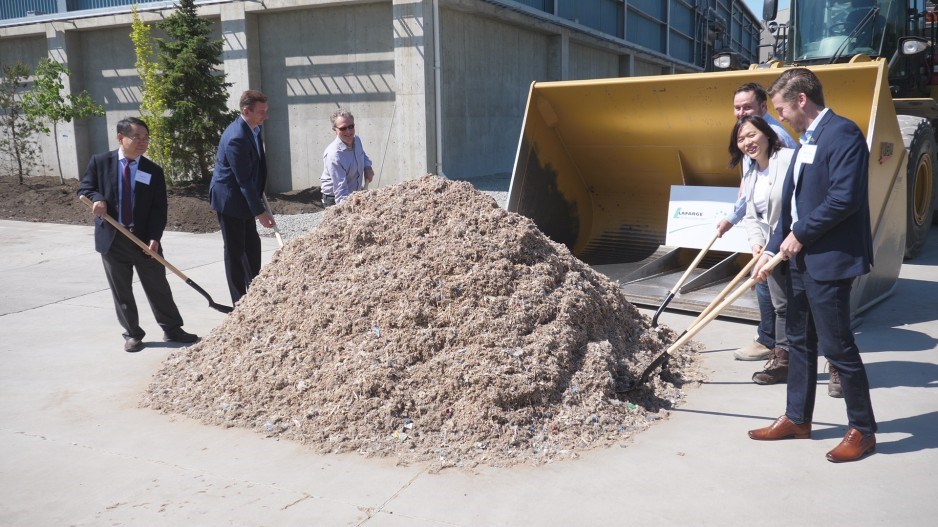Lafarge Canada officially launched a new and improved lower carbon fuel (LCF) system at its Richmond cement plant on Thursday, a move that company executives say makes the 60-year-old facility the most carbon-efficient cement plant in Canada.
“We’re leading the way and we’re very proud of it,” said plant manager Pascal Bouchard. The new system is forecast to result in the replacement of 50% of the plant’s fossil fuel consumption with LCF, which is made up of materials like construction waste, wood, and non-recyclable plastics.
The project had a total cost of $28 million, with B.C.’s Ministry of Environment and Climate Change Strategy providing $14 million in funding support. It represents a significant upgrade for the Richmond plant’s ten-year-old LCF system, which until now had allowed the replacement of up to 25% of the plant’s fossil fuel use.
“We have a 50% replacement goal but we’re not going to stop there,” said Bouchard, explaining that current operation data suggests a rate of 70% is realistic. According to a company press release, even a 50% fossil fuel replacement rate is expected to result in a 20% reduction in combustion emissions.
Aside from the decrease in emissions, the plant’s new system will also contribute to minimizing landfill waste. The LCF used is comprised mostly of non-recyclable waste like plastics and nylon fibres, which would normally end up in landfills. Instead, 100,000 tonnes of waste per year are expected to be diverted to the Richmond plant.
“With an ever growing population, using waste as a source of energy is the future of waste management and recycling. It offers superior environmental performance compared to landfill and incineration of waste and significantly reduces greenhouse gas emission from cement production,” said Sophie Wu, head of Geocycle North America, LafargeHolcim’s waste management subsidiary.




